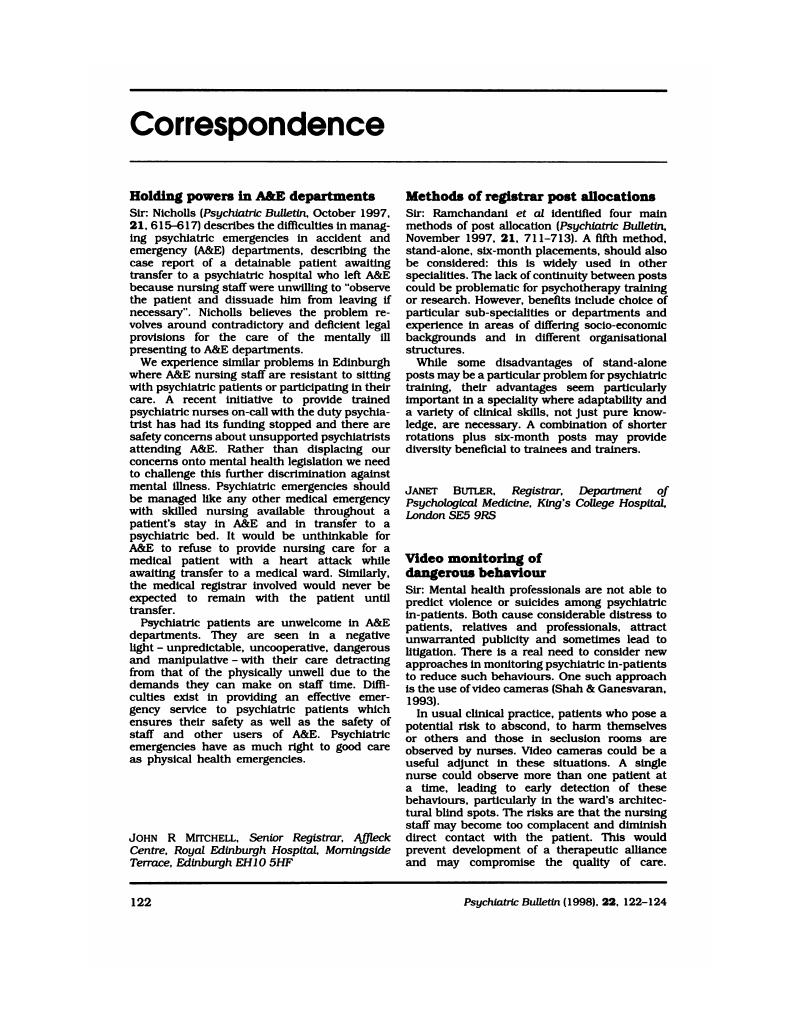No CrossRef data available.
Article contents
Video monitoring of dangerous behaviour
Published online by Cambridge University Press: 02 January 2018
Abstract
An abstract is not available for this content so a preview has been provided. As you have access to this content, a full PDF is available via the ‘Save PDF’ action button.

- Type
- Correspondence
- Information
- Creative Commons
- This is an Open Access article, distributed under the terms of the Creative Commons Attribution (CC-BY) license (http://creativecommons.org/licenses/by/4.0/), which permits unrestricted re-use, distribution, and reproduction in any medium, provided the original work is properly cited.
- Copyright
- Copyright © 1998 The Royal College of Psychiatrists
References
Brizer, D. A., Crowner, M. L., Convit, A., et al (1988) Videotape recordings of inpatient assaults: a pilot study. American Journal of Psychiatry, 145, 751–752.Google Scholar
Leong, G. B. & Silva, J. A. (1989) Videotape recordings of assaultive inpatients. American Journal of Psychiatry, 146, 287.Google Scholar
Shah, A. K. & Ganesvaran, T. (1993) Can videos be used to monitor psychiatric inpatients?
Australasian Psychiatry, 1, 158–159.Google Scholar



eLetters
No eLetters have been published for this article.